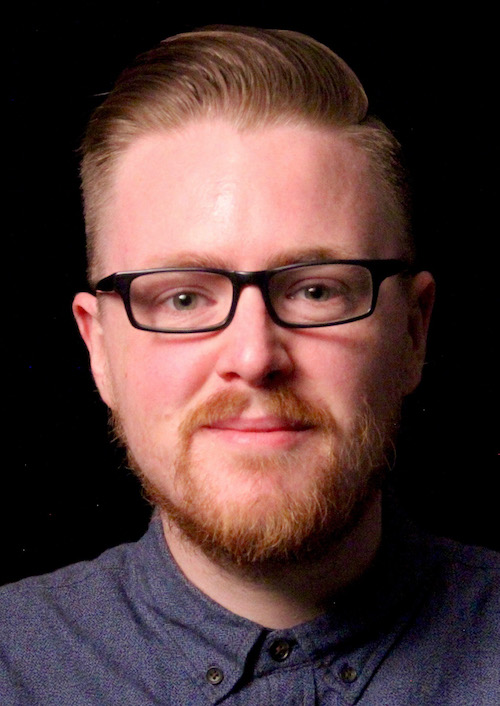Boosting Your Deployments with Vendor Partnerships

Many manufacturers have the resources to significantly assist tech managers in designing, deploying, and managing their systems. They can also provide training, education materials, and in some cases, even certifications. When systems fail, conscientious manufacturers that listen to their users will delve deep into the reason behind the failure—and oftentimes build a fix that benefits not only the user in question, but their entire customer base. And, when tech managers find themselves jumping into the unknown, good manufacturers will hold their hand through the entire process.
Such was the case at Case Western University in Cleveland, OH. Built in partnership with the Cleveland Clinic, the Health Education Campus at Case Western opened in the summer of 2019. The building houses the institution’s medical, nursing, and dental programs, as well as facilities in which anatomy education is delivered through augmented reality.
[How to Avoid AV-IT Culture Clash]
This AR technology deployment involved a partnership between Case Western and Microsoft: the university’s HoloAnatomy software (developed by anatomy faculty and software engineers) is used in combination with Microsoft HoloLens headsets, giving first- and second-year medical students 3D perspectives of the human body. Miro Humer, associate vice president of client experience at Case Western—whose team oversees support for the HoloLens devices and associated technology—said that partnerships like these require both parties to commit to making a significant investment.
“We had a high commitment level from Microsoft on this, and then we had to match that—and developing the group that was [building] the tool set for this was a significant investment for us,” Humer said.
Such a deployment also requires numerous exchanges as the technology solution is being developed. Again, Humer underlined, in order for this to be successful the vendor needs to be 100-percent on board. “If we were pushing for an anatomy program on this device, we had to make sure that Microsoft would validate that the device would work for this—that it could be handled by a student, that it wouldn’t need excessive technical support, and that it would work in our environment,” he said. “We had to know the limitations of the device, and we were constantly going back and forth with Microsoft to make sure that it would meet our needs.” For these communications to produce the desired result, he said that the goals of both parties must be aligned.

Last summer, the University of East Anglia in Norwich, U.K. performed a large-scale AVoIP rollout involving 165 endpoints comprised of ZeeVee encoders and decoders. Matt North, learning spaces technology manager, explained that this was the university’s first foray into AVoIP, mandating the need for a strong partnership with their vendor.
A daily selection of features, industry news, and analysis for tech managers. Sign up below.
North recounted that the university invited three different vendors to present their solutions, and described the rapport that began developing in his team’s meeting with ZeeVee representatives. “I said [to myself], ‘These people would be approachable. They would respond to my calls,” he said, adding that he also felt the company would offer strong support. He turned out to be right: after that first meeting and the subsequent follow-up questions he submitted, he received prompt responses. Now in the support lifecycle of the project, he said that this level of attention has continued whenever he has reached out to ask for help.
Mattias Llop-Allevik, vice president of workplace conferencing and event technology, global technology infrastructure at JPMorgan Chase in New York, needs vendors to deliver more than marketing-speak when presenting new solutions. “A lot of the time the marketing is different than how things actually work, or the marketing is so high-level that it doesn’t really disclose what’s happening underneath,” he said.
North, too, seeks companies that go beyond marketing materials and PowerPoint presentations. “I think the best way a vendor can pitch themselves is to actually come and listen, and understand what the problems are that we have, and want to resolve,” he said. This way, vendors are better equipped to make more meaningful product suggestions, and the conversation can take the deep dive into how certain solutions may be well suited for the problem or application in question.
For North, one of the red flags during initial conversations with vendors is when the answer to a feature-related question is, “That’s on the roadmap.” “If you’ve got a function request or a question and they say, ‘That’s on the roadmap,’ or ‘We’re looking into that’ without any kind of definitive dates, that sometimes feels like a get-out-of-jail answer,” he said.

Timely responses to questions are also crucial, North said, especially when project deadlines are tight. One issue he has run into is dealing with salespeople who aren’t able to answer highly technical questions, and are equally unable to get a rapid response from someone who can. “I’m not saying that all sales representatives need to be technically proficient to a deep level, but the ability to understand what kinds of questions people like myself could ask them, and be well placed to answer those questions, [would be helpful],” he said. He cites his experience with ZeeVee, where, during their first meeting, the sales rep was accompanied by a technical manager who was able to supply nitty-gritty engineering details on the spot. “That was positive.”
It’s difficult to imagine a tech manager that doesn’t require easy access to ongoing support post-deployment, and North prefers it when this support is attached to a single point of contact who works through that specific troubleshooting exercise or request. And, of course, he hopes this contact will move fast and communicate regularly. “If we’ve got a room that’s down because there’s a problem with the product, we’re probably wanting daily updates of what progress is being made to resolve that issue,” he said. “Quick turnaround times and frequent communication, that’s the biggest thing. If we can keep up to date with where we’re at frequently, it helps me set expectations internally as well.”
While North’s role requires him to examine detailed technical specifications associated with the solutions he’s exploring, he finds it helpful when vendors have put together clear-cut marketing materials explaining how their products work in laymen’s terms. He says this helps him to better communicate with the end users that he’s serving—especially if it’s a large project, and it’s not yet clear as to what the user actually wants and needs. “If I’m able to point that end user to marketing material that explains the product or the solution in a non-technical way—it just focuses on the functional capabilities of that product—that is a really powerful thing for me to be able to do, because it gets buy-in from [the user’s] point of view,” he said. Case studies, for example, help users visualize how the solution will work in their setting. “They’re able to see, from the outset, exactly what the product can offer and whether it will meet what they’ve got in their minds that they haven’t been able to translate into a technical solution, and I haven’t been able to tease out of them with the consultations that I do. It’s really advantageous.”
Partnering With Integrators
Llop-Allevik explained that when partnering with vendors, he seeks organizations that are able to supply knowledgeable technicians who can answer his questions about their products, as well as a support infrastructure that acts fast post-deployment.
When it comes to working with integrators, Llop-Allevik often focuses on the firm’s personnel. “Integrators, regardless of their size, are kind of the same in some respects, in that they have teams of very excellent, extremely skilled people who really know how to execute things, and then they have teams that aren’t as skilled,” he said. “If you don’t get the [top-tier team], you’re not going to be happy. It’s not that you won’t necessarily work with [the firm], you’ll just have to make specific requests when you do work with them to see if they can arrange their own resources that can be applied to whatever projects you’re working on. And obviously, different projects will require different skill sets.”
Carolyn Heinze is a freelance writer/editor.
Carolyn Heinze has covered everything from AV/IT and business to cowboys and cowgirls ... and the horses they love. She was the Paris contributing editor for the pan-European site Running in Heels, providing news and views on fashion, culture, and the arts for her column, “France in Your Pants.” She has also contributed critiques of foreign cinema and French politics for the politico-literary site, The New Vulgate.
